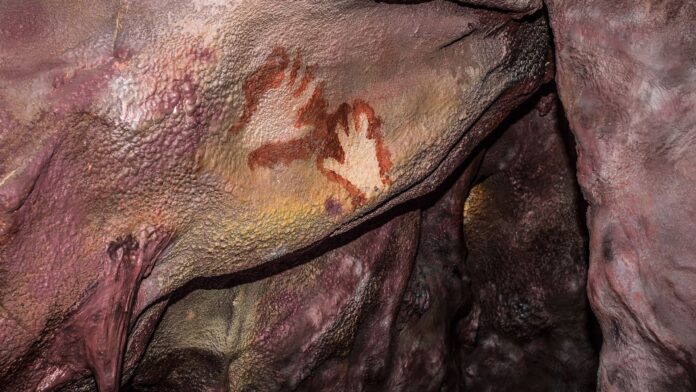For a long time, the ability to create art was seen as a defining characteristic of our species, Homo sapiens. The discovery of ancient cave paintings in Europe during the Upper Paleolithic period (45,000 to 12,000 years ago) cemented this view. But what about Neanderthals, our closest extinct relatives who lived alongside us in Eurasia from around 400,000 to 40,000 years ago? Were they capable of artistic expression too?
While it was initially doubted that Neanderthals possessed the cognitive complexity for art, recent discoveries paint a different picture. We now know they did create art, though not in the form of elaborate figurative depictions of animals or humans like those found in Homo sapiens caves. Instead, Neanderthal artwork primarily consists of hand stencils created by blowing pigment over their hands, finger flutings (impressions left by fingers pressed into soft surfaces), and geometric markings.
The evidence for Neanderthal art has been steadily accumulating.
Several caves in Spain – La Pasiega, Maltravieso, and Ardales – contain examples of linear signs, geometric shapes, hand stencils, and handprints created using pigments. Another notable site is La Roche Cotard cave in France, where Neanderthals left behind a variety of lines and shapes through finger flutings on the cave walls. Adding to this growing body of evidence, deep within Bruniquel Cave in southwestern France, researchers found a remarkable arrangement: Neanderthals had deliberately broken off stalactites into similar lengths and constructed an oval wall using them. Fires were then built atop this structure. This unusual construction, reminiscent of modern art installations, challenges conventional notions of Neanderthal behavior.
Dating the Art: A Crucial Challenge
Determining the precise age of Paleolithic cave art, however, is notoriously difficult and often contentious among archaeologists. While stylistic comparisons with dated artifacts can provide rough estimates, confirming the absolute age of these artworks requires more rigorous methods.
Fortunately, advancements in dating techniques have provided crucial insights. One method relies on charcoal pigments that can be radiocarbon-dated to pinpoint the time when the wood used for the charcoal died. However, not all black pigments are derived from charcoal; many come from minerals like manganese, making them undetectable using this technique. Another limitation is that the charcoal’s age doesn’t necessarily correspond to the exact date when it was used as pigment in the artwork.
A second method focuses on calcite flowstones (stalactites and stalagmites) that form over time, creating a layer above the artwork. By measuring the decay of uranium into thorium within these formations, scientists can establish the minimum age of the underlying art. This technique played a key role in demonstrating that hand stencils, dots, and color washes found in the aforementioned Spanish caves are at least 64,000 years old. Importantly, this places them well before the arrival of Homo sapiens in Iberia by at least 22,000 years.
The Significance of Neanderthal Art
The dating of these artifacts, coupled with the consistent presence of Middle Paleolithic tools (typical of Neanderthals) within all three caves, strongly suggests that Neanderthals were the creators of this ancient artwork.
While the precise meaning and purpose behind these markings remain open to interpretation, they challenge outdated stereotypes about Neanderthals as merely brutish “cavemen.” This evidence points toward a deeper level of cognitive sophistication and symbolic expression within their culture. It suggests they possessed an awareness of themselves within their environment and potentially even engaged with abstract ideas or imagined realms.
Further discoveries in the coming years promise to shed even more light on this fascinating aspect of Neanderthal behavior, ultimately enriching our understanding of the complex tapestry of human evolution and the origins of creativity itself.







































































